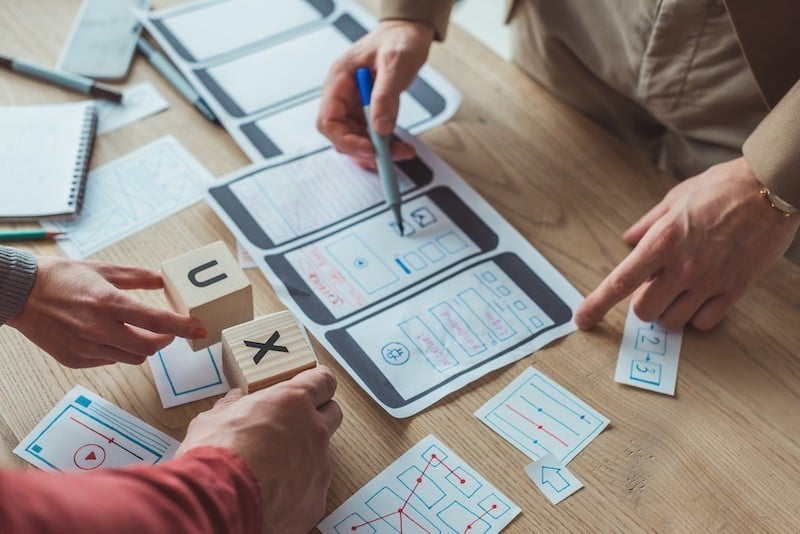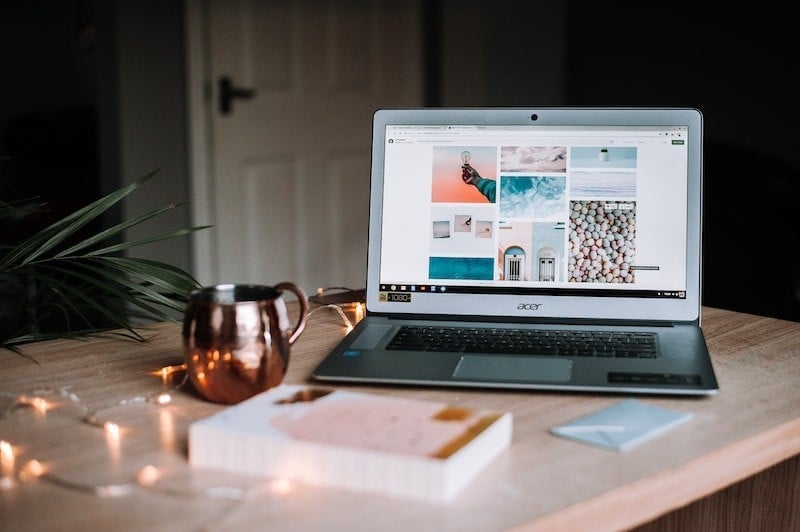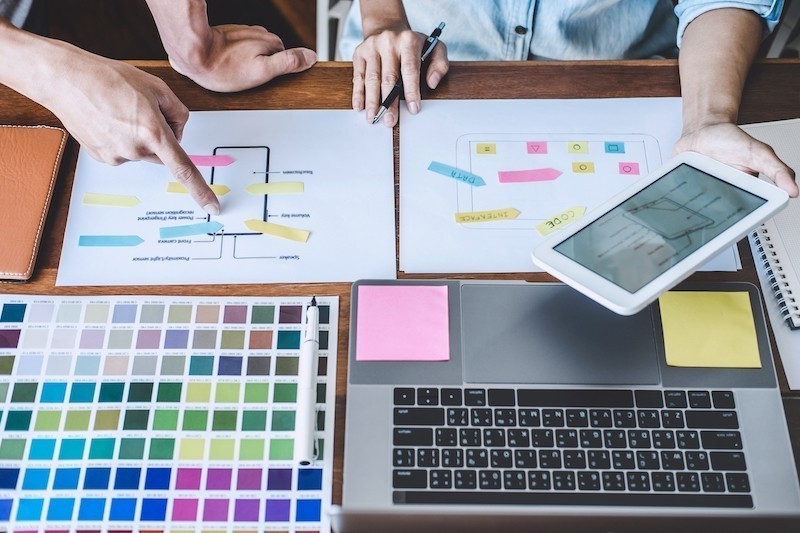At SEO Design Chicago, we offer various digital marketing services, including website design and website development. When it comes to web design, we know you want what’s best for your business, and you probably have a lot of questions about how to design an eye-catching website. We’ve compiled a list of frequently asked questions about our web design services to help you make the best decisions regarding your business’s website design.
Table of Contents
What Is Web Designing?
Web designing involves creating websites and web pages to reflect your company’s brand and information and ensure a user-friendly experience.
When designing a website, a mobile app, or maintaining the content on your website, appearance and design are two vital elements that you must consider. Your website is the online face of your business. If your website isn’t easy to understand, simple to use, and visually appealing, you could lose business or be out of business.
Our professional web designers at SEO Design Chicago use the latest technology to create a customized website just for your business. We’ll ensure your website has all the capabilities you need to succeed. Our website design team will also optimize your website for search engines. We can make your website search engine friendly and help you appear in relevant searches using SEO strategies and techniques. Our professional web design services will improve your customer experience and increase your customer lifetime value.
Not only will professional web design save your business time and money in the long run, but a well-designed website can also attract more customers and improve your business’s bottom line.
What Does a Web Designer Do?
Web designers create attractive and functional websites. They specialize in organizing information, creating content, and designing the layout of the content on a web medium.
Our professional web designers will work with you to determine your needs and your business’s website goals. Then, our web designers will design images and web pages to create a unique user experience while communicating your business’s message.
Other web designer responsibilities include:
- Use appropriate technologies to improve the functionality of your website.
- Design the navigational elements of your website.
- Translate your needs and the users’ needs into concepts.
- Capture your brand in graphics, colors, layouts, and fonts.
- Use HTML code to arrange the website elements
- Present content.
- Use SEO strategies to increase your website’s rankings on search engines.
- Update the website as needed.
- Optimize your website for desktop and mobile devices.
What Is a Web Designer vs. a Web Developer?
Web designers and web developers play critical roles in building and maintaining websites. Both functions depend on each other to deliver a quality product. The main difference between a web designer and a web developer is that developers focus on the technical aspects of the development, such as programming and coding. In contrast, designers focus on the visual elements that ensure a solid user interface and user experience.
What Types of Web Designers Are There?
Depending on your business’s needs, you can choose from three types of web designers who focus on specific types of work.
User Experience (UX)
UX designers make sure your website’s structure engages visitors and delivers a positive experience. They make data-driven decisions to create designs that appeal to users.
User Interface (UI)
UI designers prioritize interactions. They enhance the usability of websites and optimize them to encourage conversions.
Visual
Visual designers work with the layout and graphic elements to ensure the interface is easy to use and aesthetically pleasing.

What Are the Elements of Website Design?
While our professional web designers will work with you to create a website specifically for your business, we include several standard components in every web design project.
Layout
The layout of a web page refers to how the material is displayed. One crucial task that web designers have is to choose an appropriate layout. Layouts should be simple, intuitive, and accessible. Web designers should also create specialized layouts for desktop screens and mobile devices. Because so many visitors view websites on their mobile devices, mobile-friendly websites are a must!
Images
Images provide supplemental information to the text on the page. They include illustrations, graphics, photographs, and icons. Designs create the desired effect by choosing images that complement each other and represent your brand.
Visual Hierarchy
Visual hierarchy is how the user processes the information on the site. Web designers create a visual hierarchy by applying a visual pattern to the website. A visual pattern is how the design directs visitors’ eyes and behaviors. These elements encourage user interaction and promote brand recognition.
Color Scheme
The color scheme is a combination of colors that reflects your brand and industry. Color schemes usually include a dominant color as well as additional colors that create a palette. Color palettes can be monochromatic (different shades of the same color), analogous (colors next to each other on the color wheel), or complementary (two colors on the opposite side of the color wheel).
Typography
Typography is the style or font of the written content. It can include one or more font styles, but it should be attractive and easy to read.
Serif fonts are typefaces that have serifs. Serifs are extra strokes on the ends of their letterforms. These typefaces evoke feelings of history, tradition, honesty, and integrity.
Sans-serif fonts are typefaces that do not have serifs on the ends of their letterforms. They are modern, minimalist, and legible. They have an orderly and clean appearance.
Readability
Readability is when the text is easy to see and read on a web page. Readable text allows visitors to find information quickly. Designs improve readability by choosing an appropriate size and pixel for the text and creating contrast between the text and the background.
Navigation
Navigational elements allow users to choose where they want to go within a website. They may be present in the header, body, and footer of the website, depending on the site’s layout and structure.
Content
Content is all of the information available on the website. Websites that communicate clearly and grab the readers’ attention are more likely to convert visitors into consumers.
Why Should I Use Website Design Services?
Web design strongly impacts user experience, sales, and more! According to Adobe, given 15 minutes to browse, 59% of web users would rather explore a beautiful and well-designed website than a simple one. If that’s not enough to convince you of the importance of professional web design, here are six more reasons why you should use web design services.
Web design creates the first impression for your visitors.
Your website gives your audience their first impression of your business. Around 94% of first impressions correlate to web design. Additionally, it takes only 50 milliseconds for users to form an opinion about your website and business.
If your website is unattractive or outdated, your audience will form a negative impression of your business. Visitors will stay on your page if it has an appealing design. They will learn more about your business and potentially become customers.
Web design helps your search engine optimization (SEO) strategy.
Web design elements impact how you publish content on your site, which affects how search engines crawl and index your site. As a result, if you don’t do on-page SEO well, you’ll struggle to make your website visible on search engines. To ensure appropriate web design practices and improve your SEO, hire a web design agency that knows what they’re doing, like SEO Design Chicago.
Web design sets the tone for customer service.
Your website visitors will judge how your business will treat them by just looking at your website. If you don’t put any effort into designing your website, your audience will feel like you won’t put any effort into helping them.
Cheerful and inviting websites welcome visitors, while outdated and unappealing websites make your business appear unfriendly and unapproachable. Think of your website as a customer service representative. Update and modernize your website to be a friendly face that greets new visitors.
Web design builds trust with your audience.
People don’t trust poorly designed websites. Websites with outdated information appear untrustworthy and unprofessional. People won’t spend money on unreliable websites, so create a captivating website with professional web design to convert visitors to paying customers. Engaging websites encourage visitors to stay on the site longer, creating more opportunities for your business to capture more leads and convert them into customers.
Web design creates consistency.
To get new leads for your business, you’ll need to build your brand. Creating brand recognition encourages leads to choose your business when they’re ready to convert into paying customers. Web design is crucial in creating consistent branding because you’ll have the same font, styles, layout, and color palette across every page of your site. This consistency helps keep leads on your page longer and familiarizes them with your business.
Your competitors already use professional web design services.
Your competitors are already using web design services, so if you want to remain in competition with them, you must use web design for your site as well. Don’t let your competitors outrank you! Use professional web design services from SEO Design Chicago to stand out from the crowd, rank higher in search engines, and convert more customers.

What Is Involved in the Website Design Process?
Following a web design process helps developers stay organized and speeds up a project’s timeline. The web design and development process outlines the steps we take from start to finish to complete a typical web design project.
Planning
The planning stage is vital because it sets the stage for the entire project. We’ll meet with the client to map out the project in the planning phase. We’ll analyze the project’s requirements and work with you to identify your goals and target audience. Once we’ve gathered information, we’ll create a document that outlines everything we agreed upon. We’ll also create a site map and gain access to servers. We’ll discuss your requirements for software and resources, including photography, fonts, and other assets. Finally, the client will sign a contract that defines roles, copyright, and financial obligations.
Design
The design stage involves moving the information outlined in the planning stage into reality. We’ll plan the wireframe and design elements to help the website’s visual layout take shape. We’ll design mockups and tweak them until you’re satisfied. Once you’ve approved the mockup, we will code the design.
Development
The development stage involves the bulk of the programming work, as well as loading content. Here’s where we will build development frameworks and code templates for each type of page. We’ll also develop and test special features and interactivity. Then we’ll fill the pages with content and test and verify links and other functional aspects of the pages.
Launch
The launch phase prepares the site for public viewing. In this phase, we’ll polish the design elements, test the features and interactivity, and consider the user experience. We’ll transfer the website to a live server and run the site through final diagnostics.
Post-Launch
The post-launch phase involves wrapping up the project and providing the client with instructions for using the website. We’ll hand your brand new website off to you along with any documentation and source files. We’ll provide you with our contact information for ongoing support and officially close the project.
How Long Does Website Design Take?
Building a custom website from the ground up takes time. If you’re thinking about a serious project with a budget, you might be looking at a timeline of weeks or months. Keep in mind that every web design and development project differs, so the time it takes to complete the project will also vary. Plan on needing at least 12 to 16 weeks from project kickoff to website launch. Projects that are more complex or larger may take six months or more to complete.
How Do I Choose a Web Designer?
Whether you’re just starting online or updating an existing website, choosing the right web designer can put you on the right track to online success. Here are some tips for choosing a web designer for your next project.
- Decide on your budget. Keep in mind that when it comes to website design, the more you pay, the more you get.
- Make sure they provide ongoing support.
- Check out their portfolio to see if they’ve developed and designed websites within your industry or created websites with similar functionality. SEO Design Chicago has experience working with various websites in many different industries.
- Get testimonials from previous clients and view case studies. Ask previous clients: Were they easy to work with? Did they finish the project on time and on budget? Did they do everything they promised?
- Make sure they offer all the services you need, including ones you may need in the future like content creation, SEO, digital advertising, photography, and videography.

Choose SEO Design Chicago for Your Website Design Projects
SEO Design Chicago is your one-stop shop for web development and web design. We carefully design and develop aesthetically pleasing and easy-to-navigate websites from the ground up. Our websites improve the customer experience and search engine optimization (SEO). If you’re ready to revamp your business’s website or create a brand new website, contact SEO Design Chicago today!



Contact Us Today!